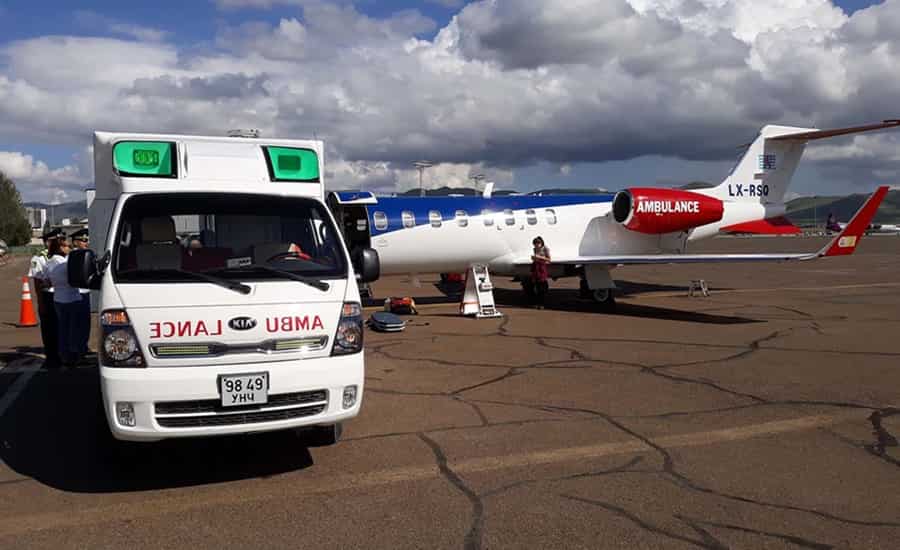In the vast and diverse landscape of India, where bustling cities coexist with remote villages and challenging terrains, the need for efficient and rapid emergency medical services cannot be overstated. Amidst this backdrop, air ambulance services emerge as indispensable lifesaving resources, bridging geographical barriers and providing critical care to those in need. This article delves into the multifaceted importance of air ambulance services in India, exploring their role in enhancing emergency medical response, improving patient outcomes, and addressing unique healthcare challenges.

I. Rapid Response and Critical Care
- Swift Transportation: Time is often the determining factor in medical emergencies, and air ambulances offer unparalleled speed in reaching patients, particularly in remote or inaccessible areas where ground transportation may be hindered.
- Critical Care En Route: Equipped with state-of-the-art medical equipment and staffed by highly trained medical personnel, air ambulances provide critical care during transit, ensuring that patients receive necessary interventions while en route to healthcare facilities.
- Minimizing Deterioration: By minimizing transit time and providing a controlled medical environment, air ambulances reduce the risk of patient deterioration during transportation, especially in cases of trauma, cardiac emergencies, or organ transplant transfers.
II. Accessibility to Specialized Medical Care
- Bridging Geographic Gaps: India’s vast geographical expanse often results in disparities in access to specialized medical care, particularly in rural or remote areas. Air ambulances facilitate the transfer of patients from regions with limited medical resources to hospitals equipped to handle their specific needs.
- Inter-City and Inter-Country Transfers: With the ability to traverse long distances efficiently, air ambulances facilitate inter-city and even inter-country transfers for specialized treatment, ensuring that patients reach the appropriate medical facilities regardless of geographic location.
III. Versatility and Reach
- Navigating Challenging Terrains: From mountainous regions to densely populated urban centers, air ambulances have the versatility to navigate diverse terrains and reach patients in areas where traditional ambulances may face obstacles.
- Remote Access: In remote or inaccessible areas where traditional ambulances struggle to reach, air ambulances serve as a lifeline, providing vital medical assistance to those in need and ensuring equitable access to emergency healthcare services.
IV. Enhanced Healthcare Infrastructure Integration
- Advancements in Emergency Medical Care: The evolution of air ambulance services reflects advancements in emergency medical care, with aircraft equipped with advanced medical technology and staffed by specialized medical teams capable of providing high-quality care in transit.
- Integration with Healthcare Ecosystem: Air ambulance services are an integral component of the broader healthcare ecosystem, seamlessly integrating with ground-based emergency services, hospitals, and medical facilities to provide comprehensive emergency medical care.
V. Addressing Challenges and Saving Lives
- Improving Patient Outcomes: By expediting access to medical care, providing critical interventions during transit, and minimizing the risk of patient deterioration, air ambulance services contribute significantly to improving patient outcomes and saving lives.
- Mitigating Transportation Risks: In a country where nearly 23 percent of all trauma is associated with inadequate transportation of patients, air ambulances play a vital role in mitigating transportation risks and ensuring timely access to medical care for those in need.
VI. Future Outlook and Advancements
- Continued Advancements: With ongoing advancements in technology and medical practices, the future of air ambulance services holds promise for further enhancements in emergency medical response, patient care, and healthcare accessibility.
- Expansion of Services: As the demand for quality healthcare services continues to grow, we can expect the expansion of air ambulance services to encompass a wider range of medical emergencies and geographic locations, ensuring that no patient is left behind in times of need.
Conclusion
In the dynamic landscape of emergency medical services in India, air ambulance services stand out as indispensable assets, providing swift, efficient, and lifesaving care to those in need. From remote villages to bustling cities, these aerial lifelines bridge geographic barriers, enhance healthcare accessibility, and save countless lives every day. As technology advances and healthcare infrastructure evolves, the importance of air ambulance services in India will only continue to grow, reaffirming their status as the lifeline in the skies.
Also Read:
COMMENTS